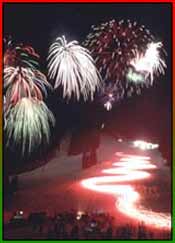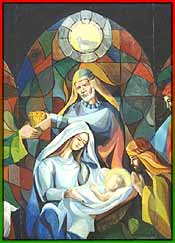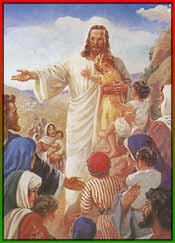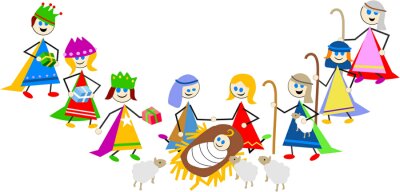Este ano quero paz no meu coração.
Quem quiser ter um amigo,
que me dê a mão...
 Introduction All over the world, people welcome the new year for it is one of the oldest of all holidays. Most New Year celebrations focus on family and friends. It is a time to reflect on the past and envision a future, perhaps, in a world where people live together in harmony.
Introduction All over the world, people welcome the new year for it is one of the oldest of all holidays. Most New Year celebrations focus on family and friends. It is a time to reflect on the past and envision a future, perhaps, in a world where people live together in harmony.  |
| Eilean Donan Castle - Scotland |
 |
| Ballachulish, Western Highlands - Scotland |
 |
| Genuine Scottish Clothing |
 Já que estamos no Natal que tal aprendermos um vocabulário "natalino"?
Já que estamos no Natal que tal aprendermos um vocabulário "natalino"?
 Christmas Eve is the day before Christmas. The celebration of Christmas begins on the evening of December 24. The importance of Christmas Eve in terms of popular customs is greater than that of the Day itself. On this day, the Christmas-tree is manifested in its glory; then, the Yule log is solemnly lighted in many lands; then often the most distinctive Christmas meal takes place.
Christmas Eve is the day before Christmas. The celebration of Christmas begins on the evening of December 24. The importance of Christmas Eve in terms of popular customs is greater than that of the Day itself. On this day, the Christmas-tree is manifested in its glory; then, the Yule log is solemnly lighted in many lands; then often the most distinctive Christmas meal takes place. |
 |
 The idea to celebrate Christmas on December 25 originated in the 4th century. The Catholic Church wanted to eclipse the festivities of a rival pagan religion that threatened Christianity's existence. The Romans celebrated the birthday of their sun god, Mithras during this time of year. Although it was not popular, or even proper, to celebrate people's birthdays in those times, church leaders decided that in order to compete with the pagan celebration they would themselves order a festival in celebration of the birth of Jesus Christ. Although the actual season of Jesus' birth is thought to be in the spring, the date of December 25 was chosen as the official birthday celebration as Christ's Mass so that it would compete head on with the rival pagan celebration. Christmas was slow to catch on in America. The early colonists considered it a pagan ritual. The celebration of Christmas was even banned by law in Massachusetts in colonial days.
The idea to celebrate Christmas on December 25 originated in the 4th century. The Catholic Church wanted to eclipse the festivities of a rival pagan religion that threatened Christianity's existence. The Romans celebrated the birthday of their sun god, Mithras during this time of year. Although it was not popular, or even proper, to celebrate people's birthdays in those times, church leaders decided that in order to compete with the pagan celebration they would themselves order a festival in celebration of the birth of Jesus Christ. Although the actual season of Jesus' birth is thought to be in the spring, the date of December 25 was chosen as the official birthday celebration as Christ's Mass so that it would compete head on with the rival pagan celebration. Christmas was slow to catch on in America. The early colonists considered it a pagan ritual. The celebration of Christmas was even banned by law in Massachusetts in colonial days.  Mistletoe and Holly Two hundred years before the birth of Christ, the Druids used mistletoe to celebrate the coming of winter. They would gather this evergreen plant that is parasitic upon other trees and used it to decorate their homes. They believed the plant had special healing powers for everything from female infertility to poison ingestion. Scandinavians also thought of mistletoe as a plant of peace and harmony. They associated mistletoe with their goddess of love, Frigga. The custom of kissing under the mistletoe probably derived from this belief. The early church banned the use of mistletoe in Christmas celebrations because of its pagan origins. Instead, church fathers suggested the use of holly as an appropriate substitute for Christmas greenery.
Mistletoe and Holly Two hundred years before the birth of Christ, the Druids used mistletoe to celebrate the coming of winter. They would gather this evergreen plant that is parasitic upon other trees and used it to decorate their homes. They believed the plant had special healing powers for everything from female infertility to poison ingestion. Scandinavians also thought of mistletoe as a plant of peace and harmony. They associated mistletoe with their goddess of love, Frigga. The custom of kissing under the mistletoe probably derived from this belief. The early church banned the use of mistletoe in Christmas celebrations because of its pagan origins. Instead, church fathers suggested the use of holly as an appropriate substitute for Christmas greenery. 

Now, there's plenty of information about Christmas traditions and symbols especially for you! Christmas colors are red and green. Today, traditional Christmas activities include caroling, making and giving gifts, sending cards to family and friends, and enjoying festive dinners and parties. Origins of Christmas
|
Christmas cards The first known Christmas card is printed on the front cover with a date of 1843. The original was in muted colours, hand painted, printed and sold for 1/- each (5p) - a lot of money in those days. Despite the date on this card, encyclopaedias say that Christmas cards were first sold in 1846! By the 1860s the idea of sending cards had caught on as they were able to be produced much more cheaply with the invention of less expensive colour printing. The first Christmas cards had lace and flowery borders, but then they changed to more familiar designs. The robin became very popular as were Victorian snow scenes, religious pictures, holly, Christmas trees etc. Many similar scenes are reproduced in our cards today. |
The card reproduced above was printed as a postcard and sent in 1905 with a ½d stamp. That's all for now, folks! See you next time! |
 Gostaria de ensinar hoje algumas gírias de Nova York. Por ser uma cidade grande como São Paulo o sotaque nova-iorquino, como também as gírias, são muito distintas do resto dos Estados Unidos. Aqui vão algumas:
Gostaria de ensinar hoje algumas gírias de Nova York. Por ser uma cidade grande como São Paulo o sotaque nova-iorquino, como também as gírias, são muito distintas do resto dos Estados Unidos. Aqui vão algumas: